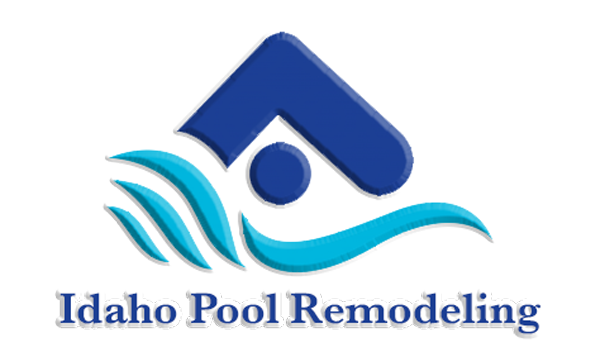Interior Finishes
The interior finish or plaster of your pool or spa is the largest and most expensive wear item in your pool. It is also makes the largest visual impact. Just like carpet in your home, it eventually wears out or can become hard to clean or stained. Again, just like carpet, many options and grades are available. Color choices, textures and longevity are all considerations we are happy to guide you through.
White Pool Plaster
White Plaster pools have been the standard for decades. White plaster is a simply a mixture of white Portland Cement and white sand such as Dolomite. Admixes to help the curing process or prevent staining may be added as well.
When mixed with water it forms a paste, which is applied to the prepared surface with trowels. This is very labor intensive and it is important to have experienced applicators so color is consistent and the surface is smooth.
Advantages and Disadvantages of White Plaster:
- (+) White pool plaster finishes are less expensive than other types of finish.
- (+) Surface does not bleach when exposed to high concentrations of chlorine. In darker surfaces using some types of chlorine is not recommended because of bleaching potential.
- (+) Color changing lights are brightest and most effective in white pools.
- (-) White plaster tends to show mottling on cloudy days. Mottling is color variations in the plaster due to different levels of hydration, inconsistencies in materials and application. Mottling is not a defect in application.
- (-) White plaster stains easily.
- (-) Generally, white pool plaster has no manufacturer's warranty.
- (-) Pool Plaster is heavy in pool sands, generally Dolomite. Dolomite being calcium based is more sensitive to etching than other types of finish.
Colored Pool Plaster
Colored plaster is the same product as white pool plaster, but, with dyes and pigments added to change the color.
Advantages and Disadvantages of Colored Pool Plaster:
- (+) Colored plaster tends to not have the same mottling issues as white plaster.
- (+) Colored plasters can enrich the water color. Grey pools lead to deep blue water color, blue colored plaster can make pools very blue, green colored plaster can turn water a tan color, etc.
- (+) Lightly colored plaster can still show the effects of color changing lights fairly well.
- (-) If repairs are needed between refinishing, matching the color can be difficult.
- (-) Adding color is an additional cost.
- (-) Changing the color of the plaster to one with colored pigments usually requires changing steps, drain covers, return fittings to a matching color. This is an additional expense.
Pebbled Surfaces
Pebbled surfaces offer interesting texture and visual impact options for pool finish. Many include Quartz additives, admixes and pigments. As with Quartz pools, some of these finishes are pre-mixed and some are field mixed recipes.
Advantages and Disadvantages of Pebble Surfaces:
- (+) Exposed Pebbles are very resistant to staining.
- (+) Pebbles add substantially to the visual impact of the pool.
- +) Pebble aggregates have a manufacturer's warranty.
- (+) Manufacturers of Pebble finishes offer training for applicators.
- (+) Pre-mixed Pebble finishes are more easy to match colors should repairs be needed between refinishing.
- (+) Field mixed Pebble finishes can be blended to be a custom mix of aggregates and pigments
- (-) Exposed Pebble surfaces can be rough on feet, knees and other body parts.
- (-) Pebble finishes are among the most expensive pool finishes.
- (-) Custom field mixed recipes may be difficult to match colors with if you don't have the original recipe or use another applicator.
- (-) Exposed pebbles tend to lose pebbles over time.
- (-) Exposed pebble finishes can be more difficult to clean because of the areas between the pebbles holding dirt and algae.
Quartz Pool Plaster Finishes
An increasingly popular choice, Quartz pool plaster finishes utilize colored quartz crystals as a substitute to some of the aggregates such as Dolomite Sand. Some Quartz finishes are pre-mixed in bags, some are field mixed recipes.
Advantages and Disadvantages of Quartz Plaster Surfaces:
- (+) Quartz finishes is substantially more resistant to staining than white plaster. This can also lead to a longer lasting surface.
- (+) Quartz Pool Plaster finishes add a visual texture with colored aggregates. This is enhanced over time as the aggregate is exposed.
- (+) Quartz aggregates have a manufacturer's warranty.
- (+) Manufacturers of Quartz pool finishes offer training for applicators.
- (+) Pre-mixed Quartz finishes are more easy to match colors should repairs be needed between refinishing.
- (+) The surface of Quartz finished pools can be honed to a smooth surface.
- (+) Field mixed pool quartz plaster finish can be blended to be a custom mix of aggregates and pigments.
- (-) Quartz Pool Plaster finishes are more expensive than white or colored Marcite. Pre-mixed quartz finishes are more expensive than field mixed.
- (-) Custom field mixed recipes may be difficult to match colors with if you don't have the original recipe or use another applicator.
Get More Information about Our Pool Interior Finishes!
Give us a call at (208) 495-5047 today.

